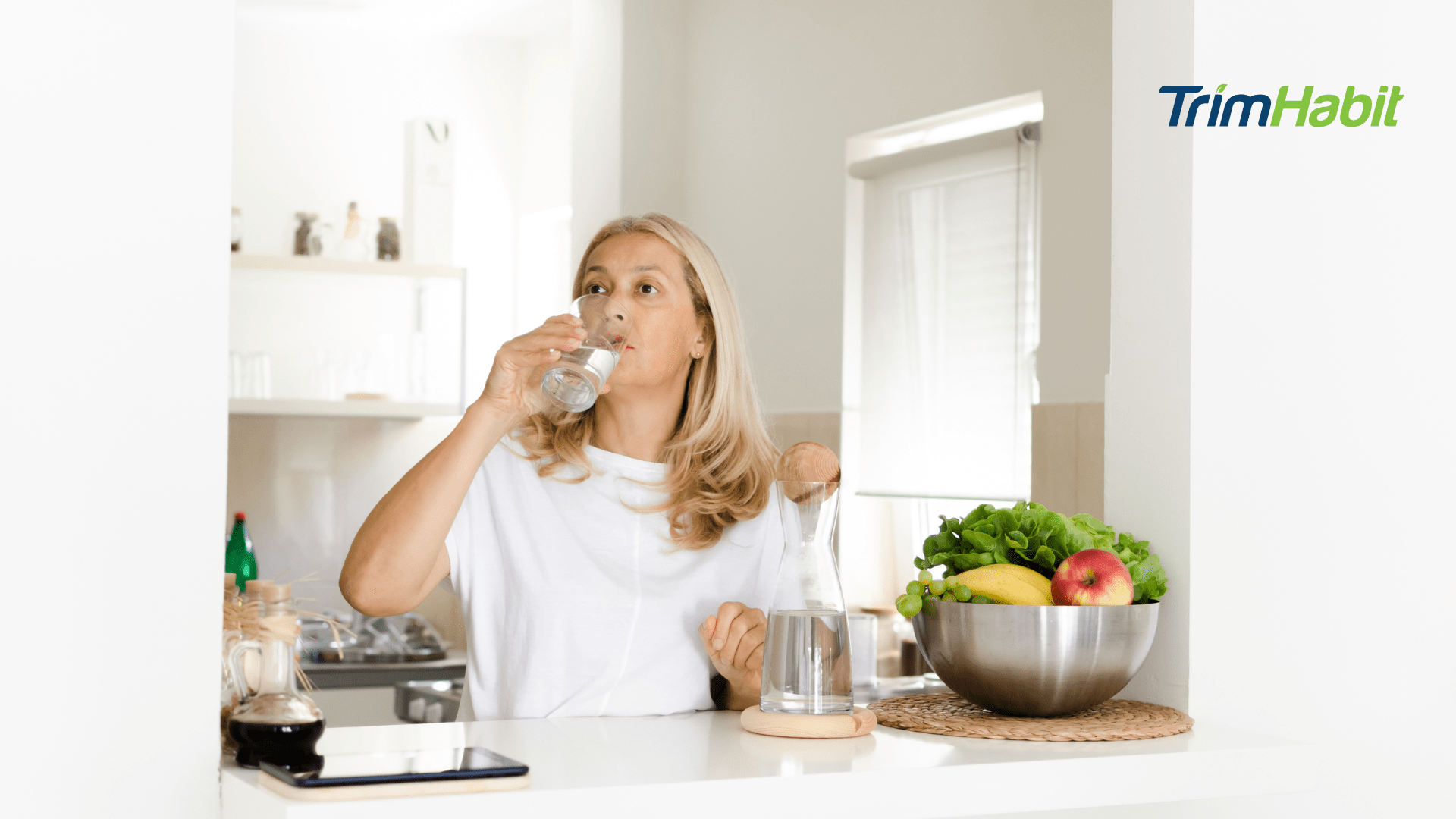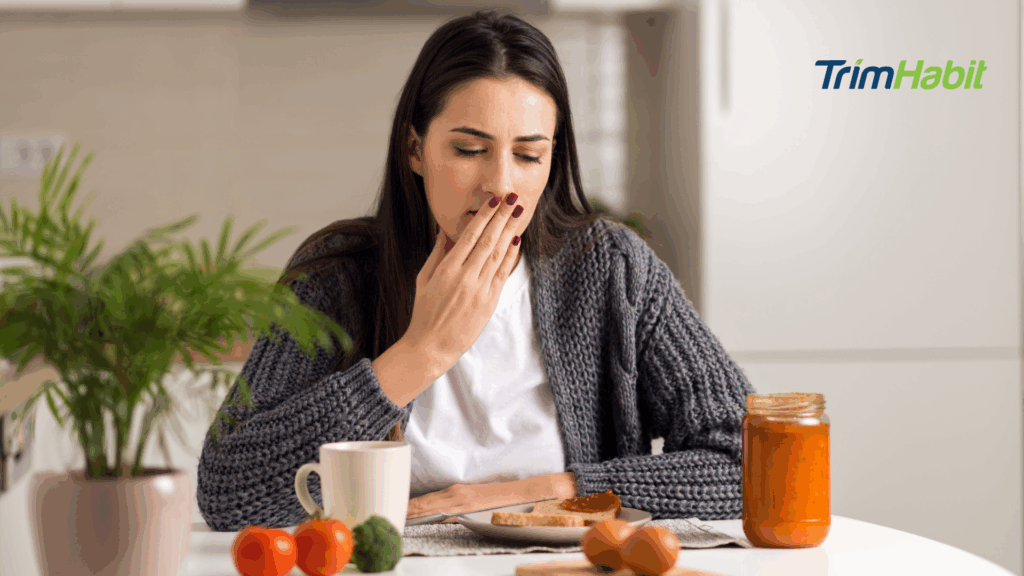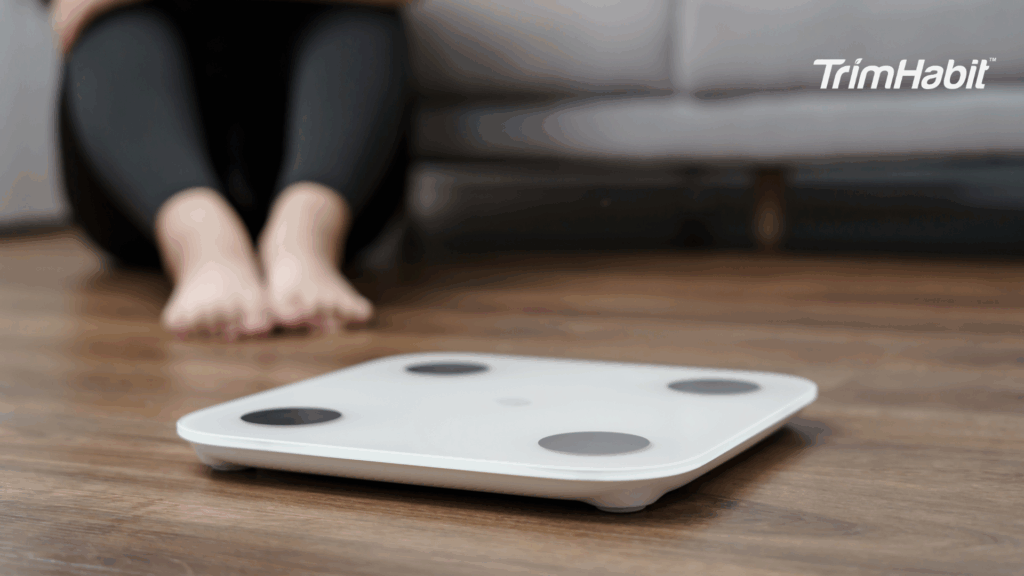Semaglutide, a medication increasingly used for managing type 2 diabetes and weight loss, has gained widespread attention for its effectiveness. Semaglutide medications are commonly prescribed for weight management and blood sugar management, making them a key tool for individuals seeking to improve metabolic health and prevent complications associated with diabetes. However, like any medication that impacts appetite and digestion, semaglutide can subtly influence your hydration levels, often in ways you might not expect.
In this article, we’ll break down how to stay hydrated while on semaglutide, why hydration matters on semaglutide, signs of dehydration to watch for, and practical, easy-to-implement strategies to ensure you’re drinking enough, without having to force it.
Why Hydration Is Especially Important On Semaglutide
Hydration is essential for individuals taking semaglutide (e.g., Ozempic, Wegovy, Rybelsus) because the medication affects appetite, digestion, and fluid balance in ways that can increase the risk of dehydration. The effects of semaglutide, including its impact on appetite and gastrointestinal function, can contribute to dehydration risks, mainly if side effects like nausea or diarrhea occur1.
Here’s a breakdown of why staying hydrated is crucial for managing blood sugar levels and minimizing the side effects of semaglutide:
1. Appetite Suppression Reduces Fluid Intake
Semaglutide mimics the GLP-1 hormone, which suppresses appetite. As a result:
- People tend to eat and drink less, which can reduce overall calorie intake and decrease consumption of certain foods that contribute to hydration. Less food means less water from food sources (many fruits, vegetables, and meals contribute to daily hydration).
- People may forget to drink water when they’re not feeling hungry.
2. Delayed Gastric Emptying Can Lead to GI Side Effects
Semaglutide slows stomach emptying, which can cause:
- Nausea
- Vomiting
- Diarrhea
- Stomach pain
These symptoms can lead to fluid loss, making dehydration more likely, especially in the early weeks of treatment or during dose increases. Vomiting and diarrhea, in particular, can cause significant fluid loss, increasing the risk of dehydration.
3. Electrolyte Imbalance Risk
With fluid loss comes the risk of losing electrolytes like sodium, potassium, and magnesium, which are essential for:
- Muscle function
- Nerve signaling
- Heart rhythm
Fluid loss can also lead to electrolyte imbalances, increasing the risk of health complications.
Staying hydrated helps maintain electrolyte balance and reduces complications.
If you experience symptoms of electrolyte imbalance, such as muscle cramps, weakness, or irregular heartbeat, electrolyte replenishment with electrolyte-rich fluids is important to restore proper fluid and electrolyte balance.
4. Dehydration Worsens Side Effects
Not drinking enough water can intensify common semaglutide side effects, potentially leading to more severe symptoms, which may hinder weight loss efforts, such as:
- Headaches
- Fatigue
- Dizziness
- Constipation
Hydration supports kidney function and detoxification, which helps the body process the medication more efficiently. This highlights just how important regular water intake is.
Proper hydration minimizes side effects and supports overall health during semaglutide therapy.
5. Constipation is a Common Side Effect
Semaglutide frequently causes constipation, and dehydration is a major contributing factor. Fluids help:
- Keep stools soft
- Support healthy digestion (including by consuming lean proteins and foods rich in water or fiber)
- Reduce abdominal discomfort
Signs You May Be Dehydrated
Here are familiar and lesser-known signs you may be dehydrated, critical to watch for when taking semaglutide:
- Dry mouth or dry, sticky tongue
- Dark yellow urine or low urine output
- Fatigue or low energy
- Headache
- Dizziness or lightheadedness
- Thirst (note: may be blunted when on semaglutide)
- Constipation
It’s important to monitor urine color as a key indicator of hydration status—pale yellow urine typically means you are well hydrated, while darker urine can signal dehydration. Individuals with chronic dehydration are at increased risk when using semaglutide, so preventive strategies and regular monitoring are essential.
Less Obvious Signs
- Dry skin or loss of skin elasticity (slow “skin pinch” rebound)
- Muscle cramps
- Rapid heartbeat or palpitations
- Brain fog or difficulty concentrating
- Bad breath (due to reduced saliva)
- Cold hands and feet
- Mood changes, such as irritability
Dehydration can negatively impact various bodily functions, including metabolism and cognitive performance.
Why You Might Miss These Signs on Semaglutide
Semaglutide can suppress hunger and thirst cues, making it harder to realize you’re dehydrated. Nausea or bloating may discourage drinking fluids, even when your body needs them most.
Certain lifestyle habits, such as irregular eating or drinking patterns, can make it difficult to recognize the signs of dehydration.
When to Act
If you experience multiple symptoms—especially dizziness, confusion, or dark urine—it’s time to increase fluid intake. For persistent or severe symptoms, consult healthcare providers, as they are critical in assessing and managing dehydration risk.
How To Stay Hydrated While On Semaglutide
Since dehydration can worsen side effects like nausea, constipation, fatigue, and dizziness, proactive hydration is essential for effectively controlling blood sugar levels. Make drinking water your primary strategy, aiming to drink water throughout the day and consume at least eight glasses daily as a baseline to maintain proper hydration and prevent dehydration1.
1. Set a Daily Water Goal
- Aim for 2-2.5 liters (8-10 cups) of water daily, unless your healthcare provider suggests otherwise.
- Include hydrating beverages like herbal teas and diluted fruit juices in your daily fluid goal, especially if you want alternatives to plain water.
- Use a large refillable water bottle with ounce markers to track your intake.
Tip: If you’re active, in a hot climate, or experiencing vomiting/diarrhea, you may need more fluids.
2. Schedule Hydration Breaks
- Sip water first thing in the morning, between meals, and before bed.
- Set phone or smartwatch reminders to drink every 1-2 hours.
- Remember, your fluid needs increase with physical activity. Drink extra water before, during, and after exercise to stay hydrated.
Helpful habit: Keep water beside your bed and at your workstation to encourage regular sipping.
3. Flavor It Naturally
If plain water is unappealing due to nausea or boredom:
- Add lemon, cucumber, mint, or berries. These additions can also provide essential nutrients like vitamins and antioxidants
- Try herbal teas or infused water
- Use electrolyte powders or tablets with no added sugar
4. Eat Water-Rich Foods
Get hydration from your plate, not just your cup:
- Watermelon, cucumber, strawberries
- Soups and broths
- Leafy greens and celery
- Yogurt and smoothies (if tolerated)
Consuming water-rich foods helps with hydration and supports metabolic processes that are important for effective weight management.
5. Balance Electrolytes
You lose more than just water if you’re experiencing nausea, vomiting, or diarrhea. Electrolyte replenishment is a key strategy for maintaining balance and preventing electrolyte imbalances. Replenish with:
- Coconut water
- Low-sodium broth
- Electrolyte drinks
6. Avoid Dehydrating Triggers
- Limit caffeinated and alcoholic drinks, which may increase fluid loss due to their diuretic effects.
- Avoid high-sodium snacks and meals that can contribute to dehydration.
When To Consider Electrolyte Support
While hydration usually starts with plain water, there are times when your body needs more than just fluids. It needs electrolytes, too. Electrolytes like sodium, potassium, and magnesium help regulate nerve function, muscle contractions, hydration balance, heart rhythm, and they can also aid in boosting metabolic rate. On semaglutide, certain side effects can make electrolyte support especially important2.
Signs You May Need Electrolyte Support
Consider adding electrolytes if you’re experiencing:
1. Vomiting or Diarrhea
- These symptoms cause rapid fluid and electrolyte loss
- Sodium, potassium, and chloride are often depleted
- Replenishing is key to preventing dehydration and weakness
2. Persistent Nausea or Low Fluid Intake
- If you’re sipping very little due to nausea or appetite suppression, you may not be getting enough minerals through food or water alone
3. Muscle Cramps or Spasms
- Often a sign of low magnesium or potassium
- Can be worsened by dehydration or changes in body weight and fluid balance
4. Fatigue, Weakness, or Dizziness
- Especially if it feels sudden or worsens throughout the day
- Could indicate low sodium or poor hydration status
5. Very Low-Carb or Ketogenic Diet
- These diets increase water and sodium loss, especially early on
- Supplementing with electrolytes helps avoid “keto flu” symptoms (headache, fatigue, cramps)
6. Intense Exercise or Heat Exposure
- If you sweat heavily, especially in warm climates or during exercise, electrolyte losses increase
7. Frequent Nighttime Urination
- A common issue with GLP-1 medications, often related to fluid shifts
- May contribute to electrolyte imbalance if not addressed
Best Ways To Supplement Electrolytes
- Low-sugar electrolyte powders/tablets (e.g., LMNT, Nuun, Liquid I.V.)
- Coconut water (natural potassium source)
- Bone broth or low-sodium broth
- Homemade electrolyte drinks: water + pinch of salt + lemon + trace minerals
Avoid These Mistakes
- Don’t rely on sports drinks with high sugar (like Gatorade/Powerade)
- Avoid over-supplementing. Too much sodium or potassium can be harmful
- Always check with your doctor if you have kidney, heart, or blood pressure issues, especially if you have pre-existing kidney disease or metabolic syndrome, as these conditions require special attention when managing hydration and electrolytes
When To Seek Medical Advice Immediately
Severe Dehydration Signs
- Inability to keep fluids down for more than 24 hours
- Little or no urine output
- Dark, concentrated urine
- Dizziness or fainting
- Rapid heartbeat
- Confusion or extreme fatigue
Severe or Persistent GI Symptoms
- Unrelenting nausea or vomiting
- Diarrhea that lasts more than a couple of days
- Severe abdominal pain (especially if it radiates to your back)
Note: These may signal pancreatitis, a rare but serious side effect of semaglutide.
Signs of Gallbladder Issues
- Sharp pain in the upper right abdomen
- Pain after eating fatty meals
- Fever, nausea, or jaundice (yellowing of the skin or eyes)
Allergic Reactions
- Rash, itching, swelling (especially of the face or throat)
- Severe dizziness
- Trouble breathing
These symptoms may indicate a rare but serious allergic reaction and require emergency care.
Summary
Semaglutide, a medication for type 2 diabetes and weight loss, can subtly increase the risk of dehydration due to its effects on appetite, digestion, and fluid balance. Many users experience reduced thirst and fluid intake, which may lead to dehydration and worsen side effects like nausea, constipation, headaches, and fatigue.
It’s important to be proactive about hydration while on semaglutide and also essential to know how to recognize dehydration symptoms, many of which may be easy to overlook due to appetite suppression. Practical tips include setting a daily water goal (2-2.5 liters), sipping fluids regularly, flavoring water naturally, consuming water-rich foods, and maintaining electrolyte balance through products like low-sugar electrolyte drinks or broths to support your weight loss goals.
Medical attention may be needed in cases of severe dehydration, persistent digestive problems, or signs of serious complications like gallbladder issues or allergic reactions. Staying well-hydrated supports overall health, helps the body respond better to semaglutide, and may also help maintain steady blood sugar levels.









